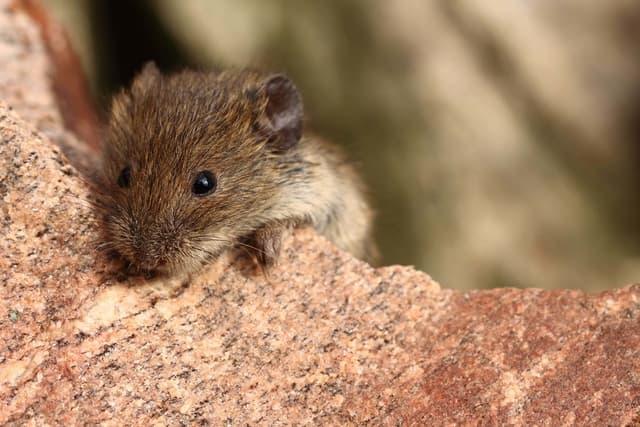The formal name for house mice is Mus musculus. They are one of the most common and annoying pests that can come into your home. These little guests who didn’t ask to come are not only a bother, but they can also be harmful to your health. To effectively avoid and control infestations, you need to know how house mice live and what they do.
Details about the body
- The length of a house mouse, without its tail, is usually between 2.5 and 3.75 inches. Their bodies are smooth, and their short fur can be grey, brown, or black. Their tails are pretty long, almost as long as their bodies, and they have fine hair all over them.
- They have big, round ears and black, beady eyes that make them stand out. It is easy for house mice to find food and get around because they can smell, taste, and touch things very well.
What You Eat
- Mice actually eat almost anything they can find, which is called omnivory. They eat things like veggies, grains, seeds, and even bugs. One reason they are often found near people is that they eat a lot of different things.
- They eat small amounts of food often, and most of the time they eat at night. Their eating habits can do a lot of damage to food that is kept, buildings, and even your home’s electrical wiring.
Rates of reproduction
- One of the most scary things about house mice is how quickly they have babies. It only takes a few months for a pair of mice to have dozens of babies. A mouse mother can have up to 10 litters a year, and each one has five to six babies. Because of this high rate of reproduction, pests spread very quickly.
Traits of Behaviour
- Mice in the house are nocturnal, which means they’re most busy at night. They are also very flexible and can do well in a wide range of conditions. These bugs are very good at climbing and can easily get up walls, jump, and fit through small gaps. They are quick and agile, so they can get to even the most hidden parts of your home.
- Mice are naturally interested too. They are going to discover new places and look for food sources. They often end up in people’s homes because they are so curious.
How to Nest and Stay Safe
- Mice in the house build their nests in safe, hidden places. Most of the time, these nests are made of soft things like cloth, shredded paper, or insulation. Some places you might find them are between walls, in attics, basements, and even inside machines.
- They choose where to nest based on things like temperature, food availability, and how close the spot is to water sources. In the winter, they’ll look for places that are warmer and cozier, and in the summer, they might choose places that are cooler.
Risks to Health
- Not only do house mice damage buildings and contaminate food, they can also make people sick. Some of the diseases they can carry and pass on are hantavirus, salmonellosis, and leptospirosis. Also, their pee and droppings can make some people with allergies and asthma worse.
In conclusion
To effectively avoid and control house mice, you need to know how they live and what they do. These little mice are more than just a bother; they’re very flexible and have a lot of babies, which can cause a lot of damage in your home. To keep mice out of your home, you need to seal up any possible entry spots, keep things clean, and use the right pest control methods when needed. If you think mice are in your home, you should hire professional pest control services to get rid of the problem quickly and effectively.
Mice Control Newmarket, we are fully aware of every detail associated with mice. We know just how inquisitive and destructive these tiny rodents can be, and even though they are highly evasive, we have devised several procedures to track down every last one of them on an infested property.
